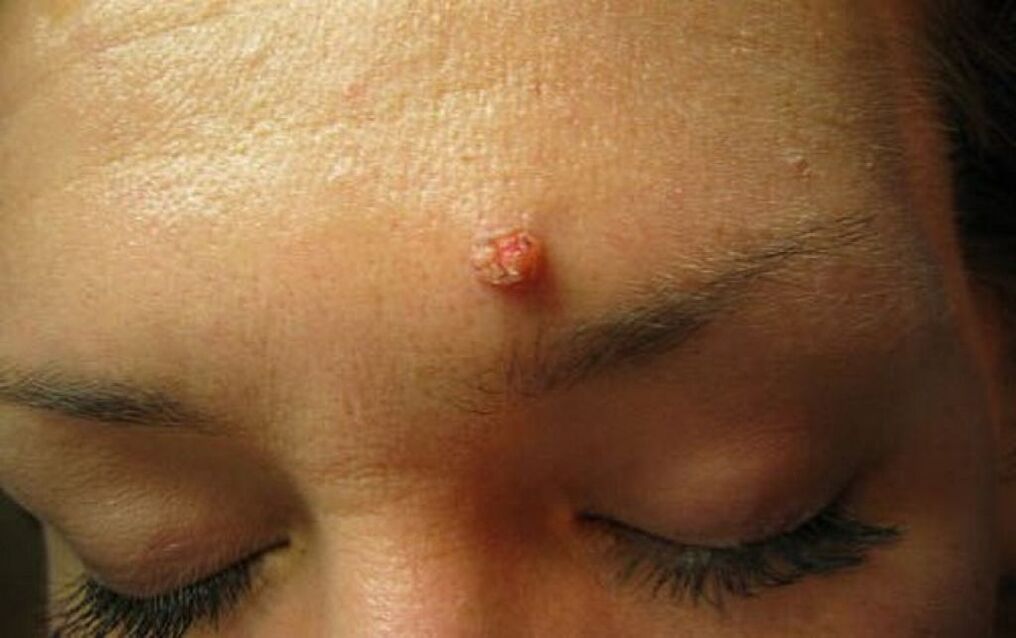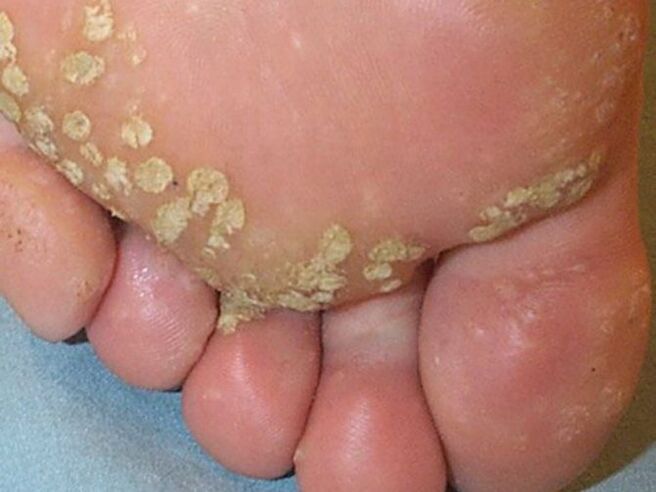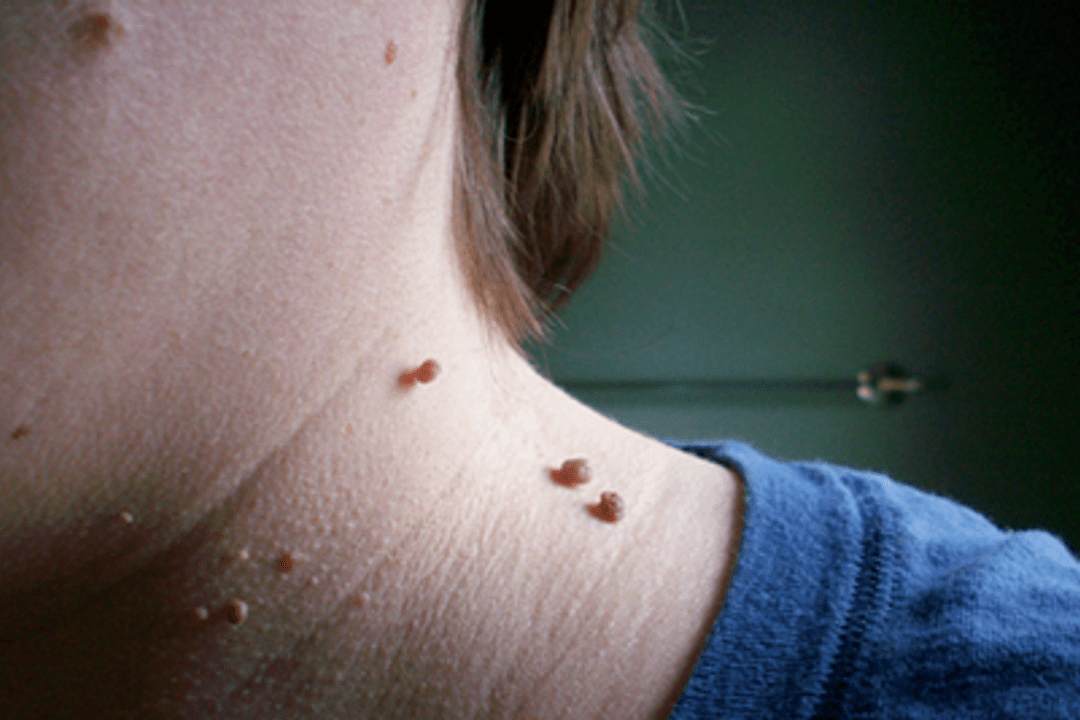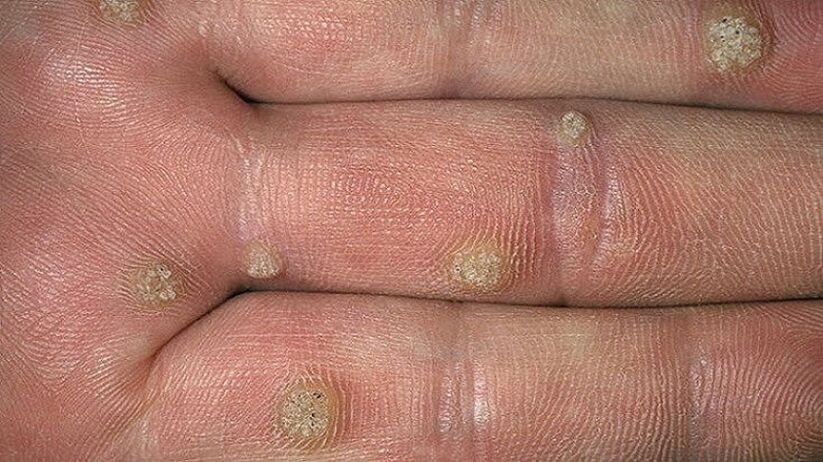Warts are benign formations on human skin. Usually it is a few millimeters in size, but there are also larger types of warts. Such neoplasms can appear in various places on the human body.
As you know, not all warts are safe. There are several types of skin lesions that require immediate removal. This is necessary to avoid further complications.
Classification of warts
In medicine, there are several types of benign formations that can appear on human skin. They differ from each other in appearance, have different development specifications, as well as location.
There are the following types of warts:
- ordinary (most ordinary);
- plantar (observed on the foot);
- pointed (condyloma);
- filiform (acrochords);
- rata.
Ordinary warts
Such neoplasms have a diameter usually not exceeding 1 cm It is a relatively dense tumor with an uneven surface and clear boundaries. Lesions on the skin, which belong to this species, are characterized by the following features:

- Round shape;
- color from yellow to dark gray;
- Common warts are often seen on the elbows, fingers, knees, lips, and other areas of the body that are often injured.
Sometimes the formation disappears on its own, but in most cases it requires long-term treatment.
Plantar warts
Such growth gets their name from their settlement. They are on the legs, have a convex shape, but due to the constant pressure created by the weight of the human body, they can become flat. The formation is surrounded by a layer of keratin skin.

Plantar growths can be uncomfortable and painful. This type of benign lesion differs from corns because of the small droplets of blood that stand out when cut, instead of pouring out the fluid. Plantar warts can cause problems with wearing shoes. They are able to appear at any age.
Genital warts
The fibroepithelial formation contains a large number of interconnected pointed nodules. Their surfaces can be white or red, sometimes they bleed and cause pain.
Acute benign neoplasms usually appear on the mucous membrane, at the point of its transition into the skin. In the future, they grow, become large. As a result, tumor -like tumors form.
Filiform warts
Such a formation on the skin gets its name from its shape. The filiform warts are narrow and long. Their localization places are as follows:
- face;
- neck;
- lips.

Externally, the filamentous formation resembles a broken thread. They can appear on the body of a person of any age, but they are often observed in older people. As they develop, the filamentous formations change their appearance:
- At first, the acrochords look like small bumps on the skin. For this reason, they can easily be confused with moles.
- Thereafter, the nodules increase in size, acquiring an elongated shape. In some cases, the acrochord is round in shape, but it still has a thin stem.
- In consistency, the formation is elastic and rather dense. As a rule, its length is not more than 5 mm, however, there are cases when the acrochord is more than 1 cm.
Some people have several formations on the body that grow together. Therefore, they resemble nests in appearance. Acrochords may be brown or remain flesh -colored. Sometimes they itch.

Flat warts
Such formations are flat nodules to the touch. They are prominent with a yellow-brown color and are usually located on the eyelids and face. These nodules are common in children, but they can also appear in older people. These benign neoplasms do not tend to turn into malignant tumors. This type of growth is very rare.
Flat warts rise slightly above the surface of the skin. They are characterized by smooth surfaces and clear boundaries. A distinctive feature is the absence of keratin skin, because smoothness and shine are preserved. Such formations are localized on the face, lower legs, dorsum of the hands.
Advice!If the neoplasm on the body, you should definitely seek the advice of a dermatologist. Only he will be able to determine the nature they have. This will eliminate the development of malignant tumors on the skin.
Senile warts
There is another type of benign formation that arises on the human body, which can be differentiated into separate categories. Their characteristics are as follows:
- senile warts (seborrheic keratosis) appear exclusively in the elderly and do not require treatment;
- they are usually located on the skin, which is often covered with clothing, and are rarely seen on the hands and face;
- Such neoplasms develop from the epidermis.
The elements of seborrheic keratosis are often multiple. Clinical manifestations depend on the time of development and location. The early elements are small flat spots of pink or yellow with a clear border, as well as a warty surface.

They resemble an oily crust on the skin, which can be easily removed. After that, this crust is compacted, striped with cracks. Over time, they change into a mushroom shape, becoming black or dark brown.
The formation has a soft consistency, its boundaries may not be completely clear, even jagged. However, they are similar to melanoma. In some cases, there is an element of dome -shaped seborrheic keratosis.
Advice!With the presence of senile warts, it is recommended to increase the amount of vitamin C that enters the body significantly. It helps stop new effects from appearing. However, it should be remembered that excessive vitamin C can cause some changes in stomach function, as well as contribute to the appearance of gallstones.
Treatment options depend on the type of wart being treated. One way or another, this process cannot be left alone. Timely contact with a dermatologist will allow the patient to undergo the procedure to remove skin formation easily and without complications. In addition, warts can be confused with malignant diseases, treatment of which certainly should not be delayed.














































































